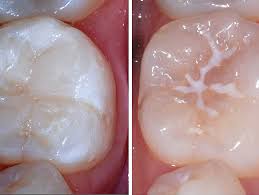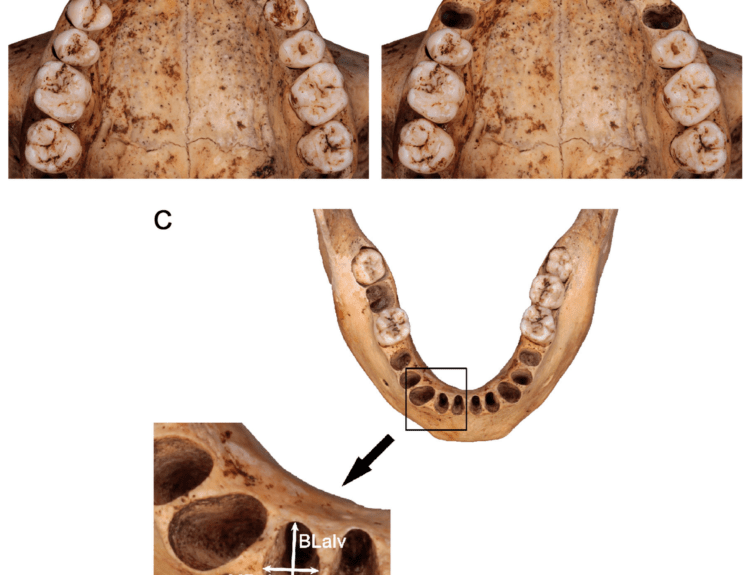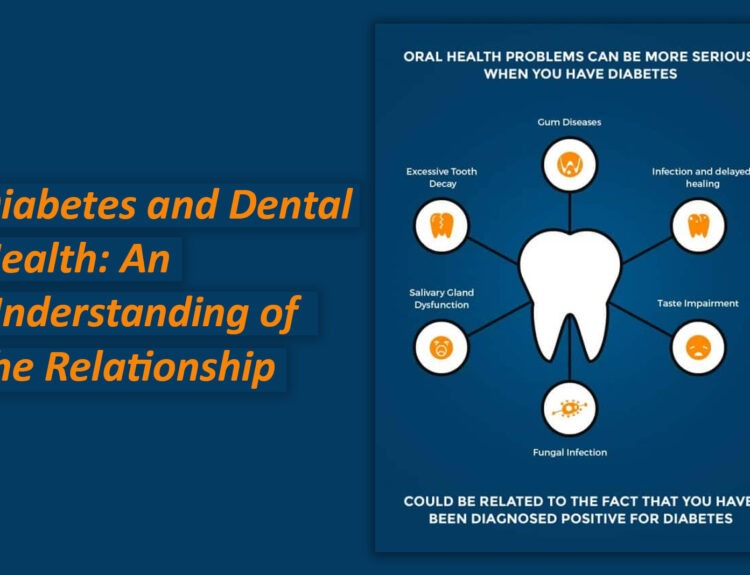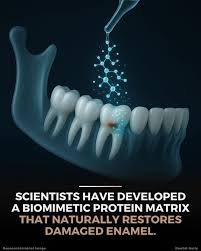Fissure sealants are protective plastic coatings applied to the chewing surfaces of back teeth to prevent tooth decay by sealing off the pits and fissures where food and bacteria can get trapped and initiate tooth decay. Molars and Premolars are the back teeth. They have deep pits and fissures that are hard to clean. Fissure Sealants prevent food and bacteria to lodge in these fissures and causing decay. They are especially helpful for children who are at higher risk of tooth decay.
Recommendation:
Dentists advise Fissure sealants generally for children aged 6 to 14, though the ideal timing may vary based on the child’s susceptibility to cavities and the eruption pattern of their teeth. Dentists usually apply sealants as soon as the permanent molars emerge. The first molars commonly erupt around age 6, and dentists place sealants shortly afterward. Similarly, the second molars usually appear around age 12, at which point dentists apply the sealants to protect them as well.
Types of Fissure Sealant
Over the years, researchers have developed various materials for fissure sealants, each with unique properties, advantages, and limitations.
Resin-Based Sealants: Resin-based sealants are the most commonly used materials in dentistry due to their excellent retention and durability. They are plastic based materials and set hard using visible curing light devices. They bond well to enamel, providing long-lasting protection and withstand chewing forces effectively.
Glass Ionomer Cement Sealants: Glass ionomer cements are an alternative to resin sealants, particularly in cases where moisture control is difficult. They consist of a fluoro-aluminosilicate glass powder and polyacrylic acid liquid, which chemically bond to the tooth structure. They have Lower retention rates they wear out faster than resin-based sealants and may require reapplication.
Compomer Sealants: Compomers are polyacid-modified plastic resins. They combine properties of both resin sealants and glass ionomer sealants. They are Less durable than plastic-based sealants and may not last as long in high-stress areas.
Bioactive and Resin-Modified Glass Ionomer Sealants: Recent advancements have led to bioactive sealants that not only act as barriers but also interact with the tooth structure to promote remineralization. They release calcium, phosphate, and fluoride ions to strengthen enamel. They possess good moisture tolerance which makes them suitable for partially erupted teeth.
Failure of fissure sealants
A fissure sealant can fail for following reasons;
Application Issues
Moisture Contamination: It is the most common cause of sealant failure. Saliva or water contamination prevents proper bonding to enamel. This is especially a challenge in children who find it hard to keep their mouth open.
Improper Technique: Inadequate etching or rinsing may lead to weak adhesion. Over-drying after etching can collapse the enamel structure, reducing bond strength.
Incorrect Sealant Placement: If the material is too thick or too thin, it may crack or wear out quickly. Air bubbles in the material weaken its structure.
Patient-Related Factors
Bruxism: Excessive biting forces from bruxism can lead to sealant fractures or dislodgement.
Chewing Sticky Foods: Sticky candies or chewing gum can pull out the sealant early.
Saliva Exposure Over Time: Even a well-placed sealant can gradually wear down, requiring reapplication.






